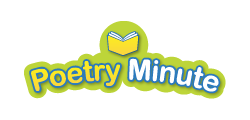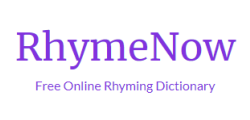
When children are learning a new language, laughter can be one of the most powerful teaching tools you have. Humor not only lightens the classroom atmosphere, but it also opens the mind to absorb new sounds, rhythms, and words. Over the years, I’ve discovered that funny poetry—short, rhythmic, and full of imagination—can make learning English not only easier, but genuinely joyful.
As someone who has spent decades writing funny poems for children, I’ve had the privilege of hearing from teachers all around the world who use my work in their classrooms. And as a language learner myself—having studied both Spanish and Portuguese—I know firsthand what it feels like to wrestle with pronunciation, spelling, and meaning in a new language. I keep those experiences in mind whenever I write, always aiming to create poems that are playful, musical, and accessible for learners of every level.
Why Poetry Works for Language Learning
Poetry and language learning have always been close friends. Poetry packs meaning into short, musical bursts that mirror the natural rhythms of speech. When children read or listen to poems, they’re not just decoding words, they’re internalizing sentence patterns, stress, and melody.
The rhyme and rhythm of poetry help build memory. Children often memorize a poem without even trying, simply because the sound patterns are so satisfying. In my poem “Our Teacher Likes Minecraft,” for instance, repetition and rhythm make the language stick. It begins like this:
Our teacher likes Minecraft.
She plays it all day.
She tells us to study
so she can go play.
Poems like this give learners a chance to feel the beat of English, to hear how stressed and unstressed syllables move like music. And because poems are short, they’re perfect for quick, daily practice, ideal for limited classroom time or short attention spans.
The Unique Power of Funny Poetry
Funny poetry goes a step further. It brings emotion into the learning process. Humor lowers anxiety, encourages participation, and turns mistakes into moments of fun rather than frustration. When students laugh, they relax. When they relax, they learn.
Funny poems also play with language in a way that invites curiosity. They twist words, invent new ones, and surprise readers with unexpected punchlines. This helps students understand that English isn’t just a set of rules—it’s a playground.
Take “All My Great Excuses,” for example:
I started on my homework
but my pen ran out of ink.
My hamster ate my homework.
My computer’s on the blink.
Even beginners can follow the rhythm and rhyme here, and the silly imagery keeps them engaged. The humor makes the poem memorable, and the structure—rhyme, rhythm, repetition—makes it a natural language-learning tool.
Another reason funny poetry works so well is that it connects students to culture. Humor reveals how people think, what they find surprising, and how they play with words. Understanding English jokes, puns, and idioms gives learners a deeper, more intuitive grasp of the language.
How Teachers Can Use Funny Poetry in the Classroom
Teachers tell me they use my poems in dozens of ways, sometimes for a few minutes of comic relief, and other times as the foundation for a full lesson. Here are a few strategies I’ve seen work particularly well:
- Read Aloud Together: Reading aloud lets students hear English rhythm and pronunciation in a natural, musical form. Try having students echo lines after you, clap out the syllables, or emphasize rhyming words.
- Act It Out: Many of my poems are practically mini-plays. In “I Went to the Doctor,” for instance, exaggerated action words and dialogue make it perfect for performance. Acting out poems helps learners practice pronunciation, intonation, and confidence.
- Use Poems as Writing Prompts: Encourage students to write their own short, silly rhymes. Give them a pattern to follow—maybe every line ends with the same rhyme, or the last line contains a funny twist. Even simple poems build grammar awareness and creative expression.
- Play Vocabulary Games: Use poems as sources for finding rhyming pairs, verbs, or adjectives. Have students highlight repeating sounds, or make lists of new words they can use later in their own poems.
- Translate and Compare: If your students share a common first language, try translating a funny poem together. Which jokes survive the translation? Which don’t? This opens discussions about idioms, connotation, and culture.
Most importantly, funny poetry builds confidence. When a student memorizes and recites a humorous poem in English, they’re doing more than practicing vocabulary, they’re performing. Moreover, when a student recites a poem that makes their classmates laugh and applaud, the sense of accomplishment can be transformative.
Using Poetry4kids to Support ELL Classrooms
If you’re teaching English Language Learners, Poetry4kids.com can make your planning easier. Members have access to powerful tools that allow you to find poems by reading level, length, and poetic techniques such as repetition, rhyme, or alliteration. You can quickly select a poem that fits your students’ ability and your teaching goal, whether you’re focusing on phonics, syllable counting, or creative writing.
In addition, members can download ready-to-use activity worksheets designed specifically for classroom engagement. These are perfect for reinforcing comprehension, vocabulary, and literary concepts in a way that feels like play.
I also include an audio recording of every poem I post (and a podcast!), so students can both see the words and hear how they sound when spoken by the author. Listening to the rhythm, phrasing, and emphasis helps learners understand the music of English, something that can be difficult to capture from text alone. Teachers can play these recordings in class to model pronunciation and intonation, or assign them for students to listen to at home for extra practice. Hearing a poem read aloud makes it come alive and helps build listening skills, fluency, and confidence.
Many teachers tell me that when they use funny poems from Poetry4kids, their students begin requesting them, sometimes daily. That’s when you know language learning is sticking: when it becomes something children want to do.
Beyond Language: The Broader Benefits
When students laugh through poetry, they gain far more than new vocabulary. They build confidence, empathy, and curiosity about the world. They begin to see English not as a set of confusing rules but as a living, expressive tool they can use to share their own ideas.
Poetry also helps develop emotional literacy. A child who can laugh at “The Biggest Burp Ever” one day may find comfort in a gentle, reflective poem the next. Both experiences build connection and understanding, skills as valuable as any grammar rule.
Poetry—especially funny poetry—turns English learning into an adventure. It brings sound, rhythm, humor, and heart into the classroom, helping students not only learn English but love it. As a writer, I try to craft poems that meet children where they are: short enough to grasp, musical enough to repeat, and silly enough to make them smile.
So to every teacher helping students master English, I say: share a laugh, share a rhyme, and let poetry do its magic. And if you’d like a place to start, visit Poetry4kids.com, where you’ll find hundreds of humorous poems that make English learning fun—for you and your students alike.
- Thanksgiving - November 24, 2025
- Weekly Children’s Poetry Roundup – Saturday, November 22, 2025 - November 22, 2025
- My Time Machine Is Broken - November 17, 2025





